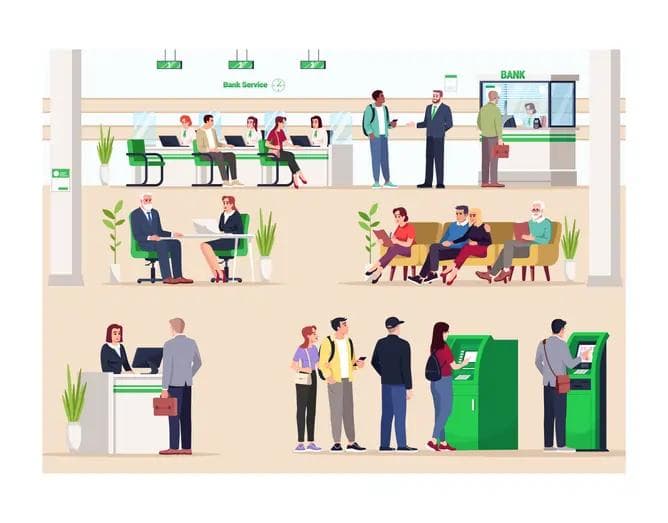The banking dilemma: balancing digital transformation with personalisation
The banking dilemma: balancing digital transformation with personalisation
Published by Gbaf News
Posted on February 19, 2020

Published by Gbaf News
Posted on February 19, 2020

By Frans Labuschagne, country manager UK&I, Entersekt
Over the last few years banking has evolved from an industry that interacted with its customers on a face-to-face level to interacting with them digitally. Not long ago, if you wanted to open a bank account, apply for credit or take out a mortgage it would mean a trip to your local bank and lengthy face-to-face meetings with your personal banker. Today, however, everything can be done online. From Natwest launching the first paperless mortgage to digital mobile-only banks gaining popularity, banks are embracing digital transformation at a rapid pace.
This new focus on digital transformation means customers are becoming reliant on online tools to perform everything from routine to complex financial transactions. Where bricks and mortar establishments and personal bankers were once the go-to for consumers, today they now have a long list of self-help options: mobile applications and online portals, ATMs and kiosks, chatbots, and video and telephone banking tools at their disposal.
The tools offer many benefits to customers, with services being available 24/7 and a significant increase in the speed of banking transactions, and they have also allowed banks to cut costs by closing bricks and mortar branches and focusing more technology to take over banking processes.
However, not all customers – from the tech-savvy user to the neo-luddite – are embracing these new all-digital banks. For instance, many avid users of digital channels still prefer to visit their branch for the “bigger decisions,” such as transferring large sums of money, while tech novices may miss the personal aspect of face-to-face banking, have security concerns around using unfamiliar technology or have not been taught how to use their banking app.
This begs the question, how can banks embrace digital transformation, without alienating their tech novice customers and dismissing the enduring importance of branches to their more tech savvy users?
Digital overkill
It is estimated that 73 percent of Brits used internet banking in 2019, a figure which has almost doubled over the last ten years. It was also revealed in a 2019 study from Accenture that mobile banking is experiencing an explosive growth in the UK, with digital-only banks expected to triple in size in the next year. These findings highlight that consumers today are embracing digital innovation and are steadily adopting the new tools on offer.
However, as was echoed in Forrester’s 2018 Banking Customer Experience Index, – it is a mistake to digitise the entire customer experience. The report explains: “Conventional wisdom states that customers prefer digital experience. As a result, companies race to create entirely digital experiences to entice customers away from contact centres and branches. That’s a mistake. Our data shows that the real situation is more complex.”
Because banks cater for a diverse range of customers and their needs vary significantly, it is therefore unwise to apply a one size fits all approach to digital banking. For instance, research has shown that while the younger generation have adopted digital banking without hesitation, the older generation have been more reluctant and less trusting.
There are also still those customers that wish to speak face-to-face with a personal banker before making a mortgage application or taking out a bank loan. They will increasingly grow frustrated if they are not offered an opportunity to speak to an actual human.
As a result of these issues, when embarking on digital transformation projects banks must ensure their new initiatives meet all their customer’s needs, otherwise they will be at risk of losing them to competitors.
Embracing digital, but keeping things personal
While there is no denying digital banking offers significant benefits, digitising the entire banking experience is not recommended. Instead banks should look at how they can use technology to enhance customer experiences and eliminate outdated processes.
This means introducing new digital tools which can speed up the process of banking, without confusing the tech-novice customer. It also means giving customers the opportunity to do their banking online, but also offering them the choice of working with a personal banker if that is what they prefer.
When it comes to bricks and mortar branches, these should now be used more as a place to provide customer advice rather than simple banking transactions. While today customers can carry out most of their day-to-day banking online, when it comes to more complex transactions some customers still want to speak to personal bankers, whether face-to-face or via phone, to ask questions and be advised. One leading financial institution that understands the importance of bricks and mortar banks is Nationwide, which has made a pledge to not close down any branch in the next two years. Even Starling Bank, once a “mobile-only” provider, has announced a partnership with the Post Office to bring in-branch services to its UK customers.
Digital transformation is critical element of banking today and customers have grown to expect that most of their day-to-day banking can now be carried out online. However, this does not mean banks should look to digitise the entire banking experience. As a result, financial institutions should start to steer their digitisation efforts in a slightly different direction. Yes, still work on optimising mobile applications, web portals and virtual assistants, but they should also consider the importance of personalisation and high service levels across all touchpoints.
Explore more articles in the Banking category











